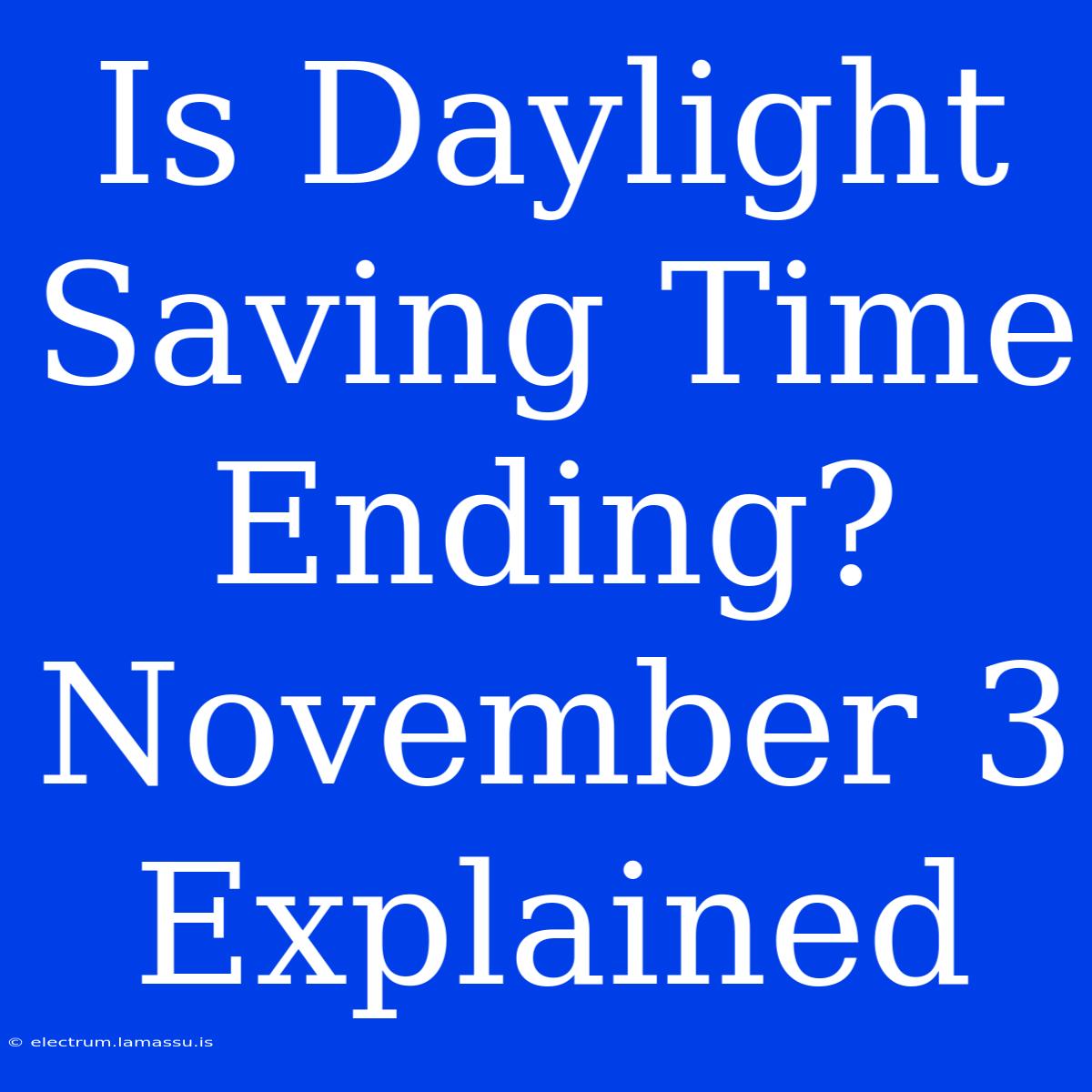Is Daylight Saving Time Ending? November 3 Explained
Is Daylight Saving Time (DST) ending? The answer is: it depends on where you live. DST ends on November 3, 2024, for most of the United States, but there are some states that are pushing to make it permanent. This shift can be confusing and potentially disruptive, so understanding the latest updates is crucial.
Why is this topic important? Daylight Saving Time has been a subject of debate for years, with arguments for and against its continued use. Some people believe it saves energy, while others argue it disrupts sleep patterns and has negative health consequences. This recent shift towards permanence in some states adds another layer of complexity.
Our analysis of the DST debate: We dug into the history of Daylight Saving Time, analyzed the arguments both for and against it, and reviewed the latest legislative updates. This detailed review helps answer your questions about the future of DST and its impact on your life.
Key Takeaways of Daylight Saving Time:
| Key Takeaway | Description |
|---|---|
| Most of the U.S. observes DST | The majority of U.S. states follow DST, meaning clocks are moved forward an hour in spring and back an hour in fall. |
| Some states seek permanence | Several states have proposed or passed legislation to make DST permanent, eliminating the need for a clock change. |
| Federal law governs DST | The federal government ultimately decides the rules for DST, including whether or not to observe it. |
| Potential for confusion | As some states move towards permanent DST while others maintain the current system, confusion and inconsistencies may arise. |
| Health and safety concerns | Critics of DST highlight potential health concerns, such as sleep disruption and increased risk of accidents. |
Daylight Saving Time: A Closer Look
What is Daylight Saving Time? DST is a practice of adjusting clocks forward by one hour during the spring and summer months to extend daylight into the evening.
The History of DST: First implemented during World War I as a way to conserve energy, DST has been used intermittently throughout the 20th century. In 1966, the Uniform Time Act was passed, standardizing DST for the majority of the United States.
Permanent DST: A Growing Trend
Several states have been pushing to make DST permanent, eliminating the need for the clock change. The argument in favor of permanent DST often focuses on:
- Increased economic activity: Longer daylight hours provide more time for outdoor activities and shopping.
- Enhanced public safety: Increased daylight hours may lead to a reduction in traffic accidents and crime.
- Improved mental health: Some studies suggest that permanent DST could improve mental health and reduce seasonal affective disorder (SAD).
Challenges to Permanent DST:
- Sleep disruption: Many people find it difficult to adjust to the sudden shift in sleep patterns when DST ends in the fall.
- Health concerns: Permanent DST could lead to chronic sleep deprivation and other health problems.
- Potential for confusion: As different states may adopt different DST policies, confusion about time zones and scheduling could arise.
The Future of Daylight Saving Time
The future of DST remains uncertain. While some states are pushing for permanence, the final decision rests with the federal government.
What does this mean for you?
- Be informed: Stay updated on the latest legislation and news regarding DST.
- Prepare for changes: Be prepared for potential shifts in DST policies in your state.
- Prioritize your health: Take steps to protect your sleep and health, regardless of DST policies.
FAQ
Q: What are the pros and cons of Daylight Saving Time?
A: Proponents of DST argue that it saves energy, reduces crime, and boosts the economy. Opponents cite sleep disruption, health concerns, and potential for confusion.
Q: How will permanent DST affect time zones?
A: If a state adopts permanent DST, it effectively shifts its time zone forward by one hour.
Q: What are the implications of different states having different DST policies?
**A: ** Different DST policies could lead to confusion and scheduling challenges, especially for businesses and individuals who operate across state lines.
Q: Will the U.S. ever adopt permanent DST?
A: The future of DST is uncertain. While there is growing momentum for permanent DST, the final decision rests with the federal government.
Q: What are some tips for adjusting to Daylight Saving Time?
A: ** Gradually adjust your sleep schedule** in the days leading up to the change. Maintain a consistent sleep routine and limit screen time before bed.
Summary of Daylight Saving Time
The debate over Daylight Saving Time continues, with some states seeking permanence while others maintain the current system. The potential implications for health, safety, and daily life are significant. Staying informed and adapting to changes are key as we navigate the future of DST.
Closing Message:
The ongoing discussion about Daylight Saving Time highlights the complex relationship between time, human behavior, and societal needs. Regardless of the eventual outcome, understanding the issues and implications is crucial for navigating this ever-evolving landscape.

